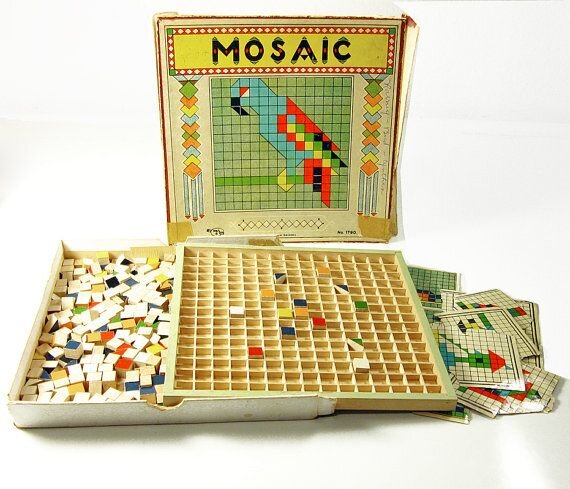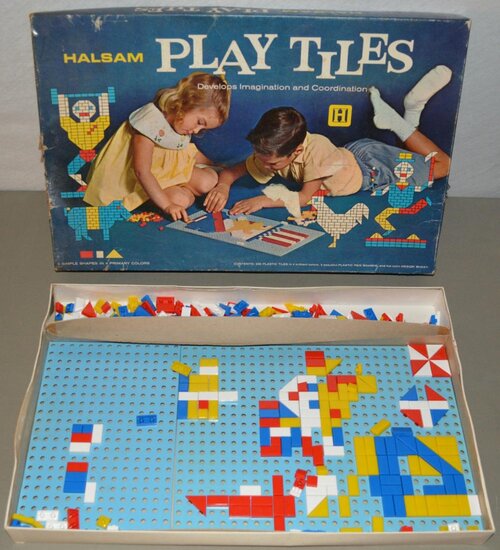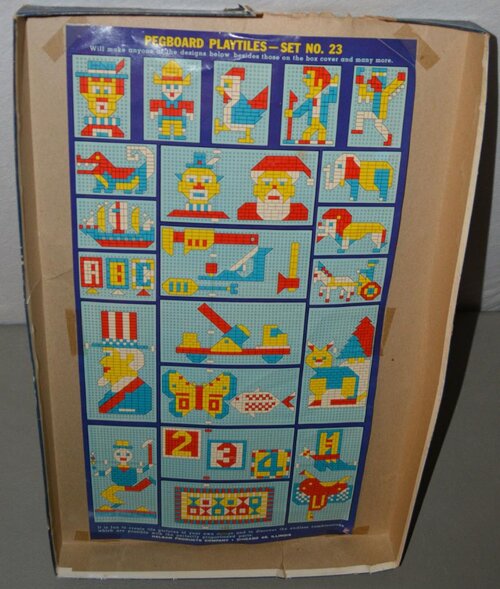Αναστασία76
RetroN00b
- Joined
- 30 Ιαν 2012
- Μηνύματα
- 8
- Αντιδράσεις
- 9
Αναζητώ το όνομα ενός παιχνιδιού από τη δεκαετία του '80.
Δε θυμάμαι καθόλου τη συσκευασία, την εταιρία κατασκευής ή κάποιο άλλο στοιχείο παρά μόνο ότι η βάση του ήταν μία γαλάζια πλαστική ορθογώνια επιφάνεια με τρύπες ανά ίσα διαστήματα που την κάλυπταν όλη. Επίσης υπήρχαν αρκετά πλαστικά ορθογώνια πλακίδια σε διάφορα χρώματα. Σκοπός ήταν να τοποθετήσεις τα πλακίδια πιέζοντάς τα πάνω στις τρύπες και να σχηματίσεις εικόνες που σου δίνονταν έτοιμες, νομίζω πάνω σε ένα χαρτί οδηγιών. Θυμάμαι χαρακτηριστικά ένα πρόσωπο και ένα καράβι, αλλά υπήρχαν και άλλες εικόνες. Το αποτέλεσμα ήταν κάτι σαν μωσαϊκό πάνω στη γαλάζια βάση. Βέβαια, μπορούσες να δημιουργήσεις και εικόνες δικής σου εμπνεύσεως με τα υπάρχοντα πλακίδια. Περνούσα ώρες ολόκληρες συναρμολογώντας τις εικόνες, βάζοντας και βγάζοντας τα πλακίδια και ξανά απ' την αρχή. Δυστυχώς το παιχνίδι κάπου χάθηκε χωρίς να είμαι σίγουρη πού και πώς. Θα ήμουν ευγνώμων, αν κάποιος το θυμάται, να με πληροφορούσατε για το όνομά του, μήπως και κυκλοφορεί κάπου ακόμα. Ευχαριστώ πολύ.
Δε θυμάμαι καθόλου τη συσκευασία, την εταιρία κατασκευής ή κάποιο άλλο στοιχείο παρά μόνο ότι η βάση του ήταν μία γαλάζια πλαστική ορθογώνια επιφάνεια με τρύπες ανά ίσα διαστήματα που την κάλυπταν όλη. Επίσης υπήρχαν αρκετά πλαστικά ορθογώνια πλακίδια σε διάφορα χρώματα. Σκοπός ήταν να τοποθετήσεις τα πλακίδια πιέζοντάς τα πάνω στις τρύπες και να σχηματίσεις εικόνες που σου δίνονταν έτοιμες, νομίζω πάνω σε ένα χαρτί οδηγιών. Θυμάμαι χαρακτηριστικά ένα πρόσωπο και ένα καράβι, αλλά υπήρχαν και άλλες εικόνες. Το αποτέλεσμα ήταν κάτι σαν μωσαϊκό πάνω στη γαλάζια βάση. Βέβαια, μπορούσες να δημιουργήσεις και εικόνες δικής σου εμπνεύσεως με τα υπάρχοντα πλακίδια. Περνούσα ώρες ολόκληρες συναρμολογώντας τις εικόνες, βάζοντας και βγάζοντας τα πλακίδια και ξανά απ' την αρχή. Δυστυχώς το παιχνίδι κάπου χάθηκε χωρίς να είμαι σίγουρη πού και πώς. Θα ήμουν ευγνώμων, αν κάποιος το θυμάται, να με πληροφορούσατε για το όνομά του, μήπως και κυκλοφορεί κάπου ακόμα. Ευχαριστώ πολύ.




